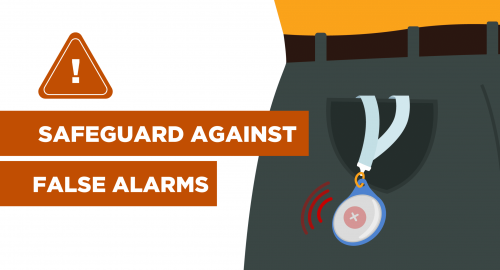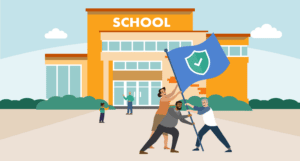Listen to this blog
4 minutes
By: Heather Terry, Raptor Content Marketing Manager—and a former teacher
Co-Written with Dr. Amy Grosso, Director, Resident Expert at Raptor Technologies
Three days after a local school shooting, the school I taught at entered a lockdown. It quickly became apparent to me that it was not a poorly-timed drill—but was in fact a serious situation.
Helicopters hovered over the campus, armed police stood in formation in the hallways and classrooms, and we were in lockdown for 3 hours past dismissal.
I called my parents to tell them I loved them. They were, of course, terrified.
Ultimately, the police found BB guns on the students responsible—not real guns.
But the trauma of that day lives on and still feels real. Writing this, I still feel my physiological trauma responses resurfacing. And while that day’s lockdown was justified, false alarms like the ones experienced just recently in Cobb County, Georgia and in Preble High School in Wisconsin don’t have a reduced impact.
False alarms do elicit real trauma.
How false alarms impact your school community
“The way in which students, staff, and families respond to false alarms needs to be called what it is: trauma. Trauma can have a lasting impact, which means that long after the school is given an all-clear, those involved will feel the impact. Each of us not only responds to trauma differently, but also the way in which we cope differs. By minimizing false alarms, we are reducing trauma.” Dr. Amy Grosso, Director, Resident Expert at Raptor Technologies
School safety teams are responsible for reducing exposure to trauma for staff, students, and parents. The current reality of school violence already has an element of trauma, so schools must take every opportunity to reduce trauma whenever possible.
Although no one was physically harmed the day I was part of a lockdown, learning that the weapons were BB guns does not make my trauma response—over 10 years later—any less.
Similarly, learning that an alarm was false after the fact does not erase the nervous system’s response. Those in the building—and their families and community—experienced a real trauma as a result of that false alarm.
Because while a false alarm resulting from someone accidentally leaning on their badge-based panic button may be resolved in minutes, it takes considerably longer for all involved to return to normal functioning. That trauma lingers.
Software-Based Solutions Designed to Prevent False Alarms
“Prior to accepting my position as Safety Administrator at Calallen, I had been a police officer for 14 years. I was involved in a lot of school safety drills, but none were as efficient as what I see with Raptor Emergency Management. It brings more structure and more order, and it also helps our staff better learn the drills—which reduces human error during an emergency.” John Garcia, Safety Administrator at Calallen Independent School District
Hardware-based solutions with badges and receivers create opportunities for false alarms. Not only can they be accidentally activated by staff, but they can also be activated (intentionally or otherwise) by non-authorized people such as students.
App-based solutions like Raptor Alert, in contrast, provide:
- A slide button within the app to trigger alerts—which reduces the chances of accidental activation.
- Second level protection against Raptor Alert misuse with Face ID—so a student can’t pick up the phone and trigger the alert like they could with a badge.
Not only is Raptor Alert designed to prevent false alarms, it’s also a more cost-effective solution. For example, one badge-based system:
- Cost a Louisiana school district cost $2.3 million,
- The system in Wisconsin cost the district $1.8 million with an annual maintenance fee of over $325,000 after five years. One board member questioned the badge-based system’s value, given the cost is over $40,000 per school, and
- The same system in Cobb County, Georgia cost the district nearly $3 million.
Raptor’s fully integrated systems cost up to 10 times less upfront, and the ongoing maintenance costs are 50-75% lower than a single-function hardware-based solution that is limited to a single type of emergency response.
Raptor not only helps reduce false alarm-related trauma, but is also a more financially-sustainable and scalable solution to the evolving safety needs of today’s schools.
Learn more about how Raptor can help schools avoid the trauma and chaos caused by false alarms. Schedule a free demo.
Related Resources
Guide to K-12 Emergency Management
Proven Strategies to Protect Your School
Listen to this blog
4 minutes








